
B2B Articles - September 23, 2016
![]() Industrial manufacturers are under pressure to improve plant productivity, enhance competitiveness, and meet customer demands for innovation. Yet some manufacturers may be reluctant amidst market uncertainty and memories of 2001 and 2008 economic hits. These 5 sales generation tips for industrial manufacturing can help combat industry headwinds.
Industrial manufacturers are under pressure to improve plant productivity, enhance competitiveness, and meet customer demands for innovation. Yet some manufacturers may be reluctant amidst market uncertainty and memories of 2001 and 2008 economic hits. These 5 sales generation tips for industrial manufacturing can help combat industry headwinds.
Sales generation for industrial manufacturing focuses on the intersection of digital marketing, lead generation and sales enablement efforts.
https://www.ironpaper.com/articles/inbound-sales-cmo-guide/
The techniques addressed in this article focus on high touch sales processes and techniques that support low touch eCommerce sales. Lead nurturing and lead management may be employed more specifically with high touch processes that have long sales cycles. However, many manufacturers are investing more in their eCommerce operations. See the growth (below) of eCommerce for manufacturers in the US.
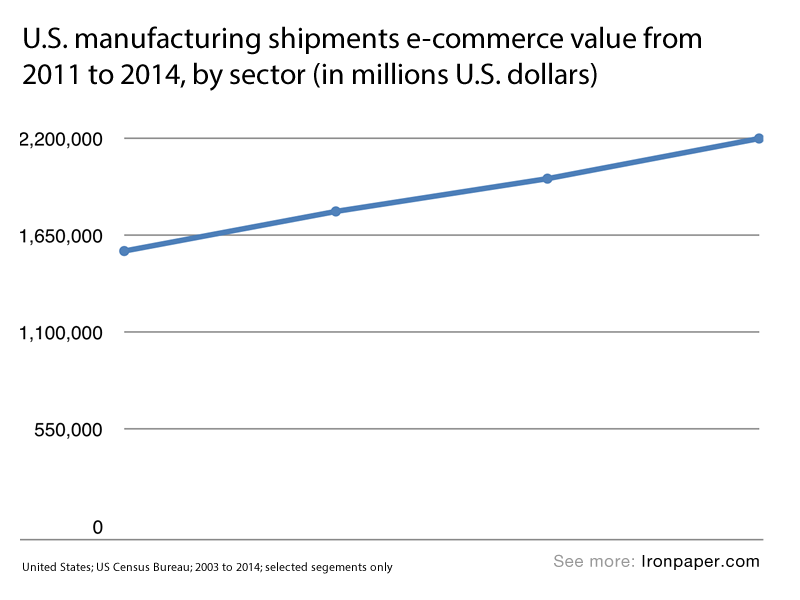
Making tactical choices to increase sales, the company can see positive returns on investment enabling technological innovation. Data shows that manufacturers are increasing their investment in advertising spend in order to increase sales.
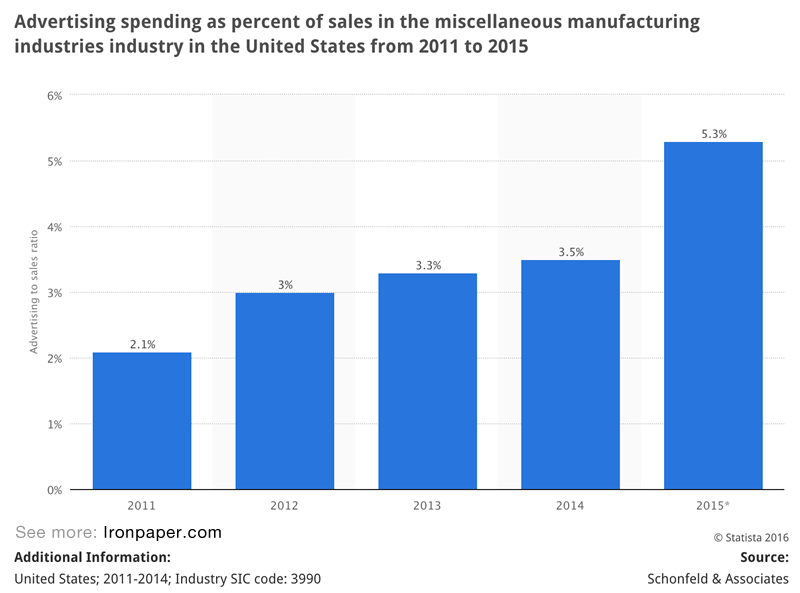
Some 94% of B2B buyers research online before making purchasing decisions. This makes the website critical to the company's first impression. Consider these best practices:
Only 28 percent of industrial manufacturers claimed to be at or near full capacity, up 8 points from Q1 but 11 points below a year ago (39 percent)— PwC Manufacturing Barometer, 2016 Q2
Lead management, lead scoring, progressive profiling and validation systems can each help scale up marketing-to-sales efforts intelligently–allowing teams to focus on hitting goals. In attracting and converting qualified sales leads:
Nurture leads using more strategic communications based on the leads’ role, buying capabilities, company capabilities, lead behavior, activities, pain points and interests. Gather data from the user and regarding customer activity across the entire funnel. Don't forget to focus on customer retention.
Only 17 percent of manufacturers reported international sales rising, while nearly half (48 percent) reported them down, or a net -31 percent lower. — PwC Manufacturing Barometer, 2016 Q2
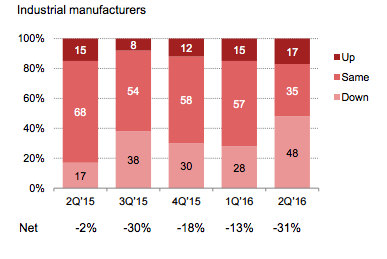 Net sales internationally. Image source: PWC
Net sales internationally. Image source: PWC
A lead should be voluntary. Stop buying email lists and cold calling. Here's some info into why cold calling doesn't work. Instead develop a campaign strategy across the many channels available to establish audience trust, prove business authority, and demonstrate thought leadership.
Creating content that nurtures each buying stage will enhance relationships with prospects down the funnel. Provide quality content that adds value for the target audience and addresses their specific pain points. Use landing pages with lead conversion forms to attract and capture lead data--rather than pointing prospects to dead ends in a website.
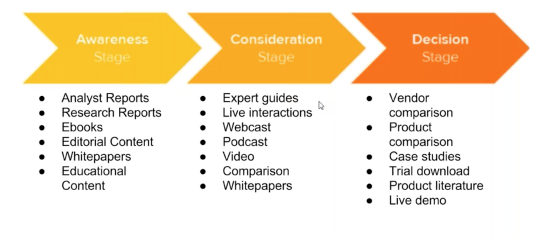
Related reading: Outbound Marketing vs. Inbound Marketing – Which is Better?
As industrial manufacturing operations evolve to embrace data-driven functionalities and connected factories, the marketer in this industry must also collect and transform data into business intelligence.
The sales lifecycle, for instance, can be tracked using an enterprise Customer Relationship Management (CRM) or a marketing automation system–most often a combination of both. Aligning the sales and marketing reporting tools can help close the gap between website activity and the sales process.
Consider using data points to understand lead interest and progressive profiling to capture more clear data on the lead's buying capabilities.
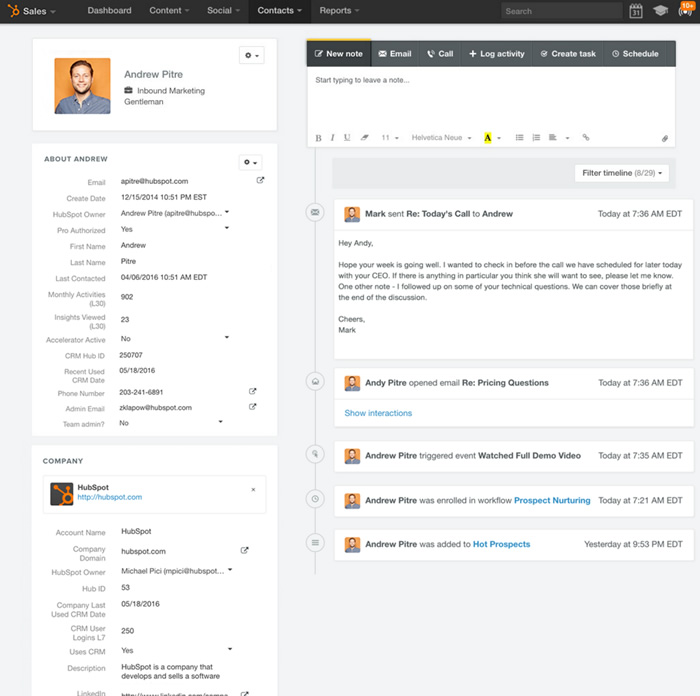
Studying sales trends using the CRM can also help marketing and sales identify drivers for current conversion rates (or the lack of conversions). Just as data is used to inform factory output, unemotional review of marketing data can reduce wasted efforts and boost optimization of the company’s digital presence.
Only 29 percent of industrial manufacturing CEOs expressed optimism about the global economy. — PwC Manufacturing Barometer, 2016 Q2
Factory workers are trained to quickly stop the line in the event of a safety issue or product quality concern. Guaranteeing desired levels of output demands the company constantly monitor productivity and act proactively. The same thinking applies to sales generation.
The industrial manufacturing marketer must respond promptly to leads and opportunities.
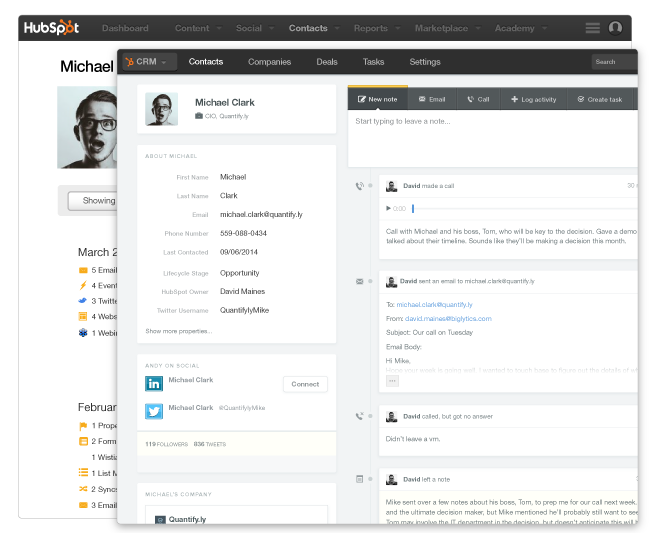
Using an automated workflow, the marketer can set triggers for publishing or sending relevant content providing context into the company’s value proposition.
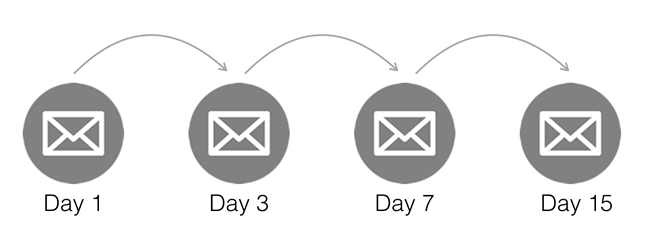
With fewer manufacturers operating near full capacity, and revenue growth declining, the marketer must quickly capitalize on a prospects’ interest.
Manufacturers’ concern about decreasing profitability over the next 12 months rose to 32 percent. — PwC Manufacturing Barometer, 2016 Q2
Sales generation depends on the industrial manufacturing marketer marrying all of these strategies. Focus on communicating a clear value, to a specific target, and educating, informing and delighting the customer.
Sales generation tips for Industrial Manufacturing sources:
Bono, R. & Pillsbury, S. (2016). 2016 Industrial Manufacturing Trends. https://www.strategyand.pwc.com/perspectives/2016-manufacturing-trends
PWC. (2016, July). Manufacturing Barometer: Business outlook report July 2016. https://www.pwc.com/us/en/industrial-manufacturing/assets/pwc-manufacturing-barometer-q2-2016.pdf
Tel 212-993-7809
Ironpaper ®
10 East 33rd Street
6th Floor
New York, NY 10016
Map
First-party data marketing
SEO for B2B
Customer journey strategy
ABM Agency
Marketing for IoT Companies
HubSpot Implementation
B2B Product Marketing
Measurable Marketing
IoT go-to-market strategy
IT Marketing
HubSpot for ABM
Go to market strategy
Technology Marketing
Marketing for IT Companies
ABM Campaigns
B2B lead generation
B2B Marketing and Growth Agency.
Grow your B2B business boldly. Ironpaper is a B2B marketing agency. We build growth engines for marketing and sales success. We power demand generation campaigns, ABM programs, create B2B content, strengthen sales enablement, generate qualified leads, and improve B2B marketing efforts.